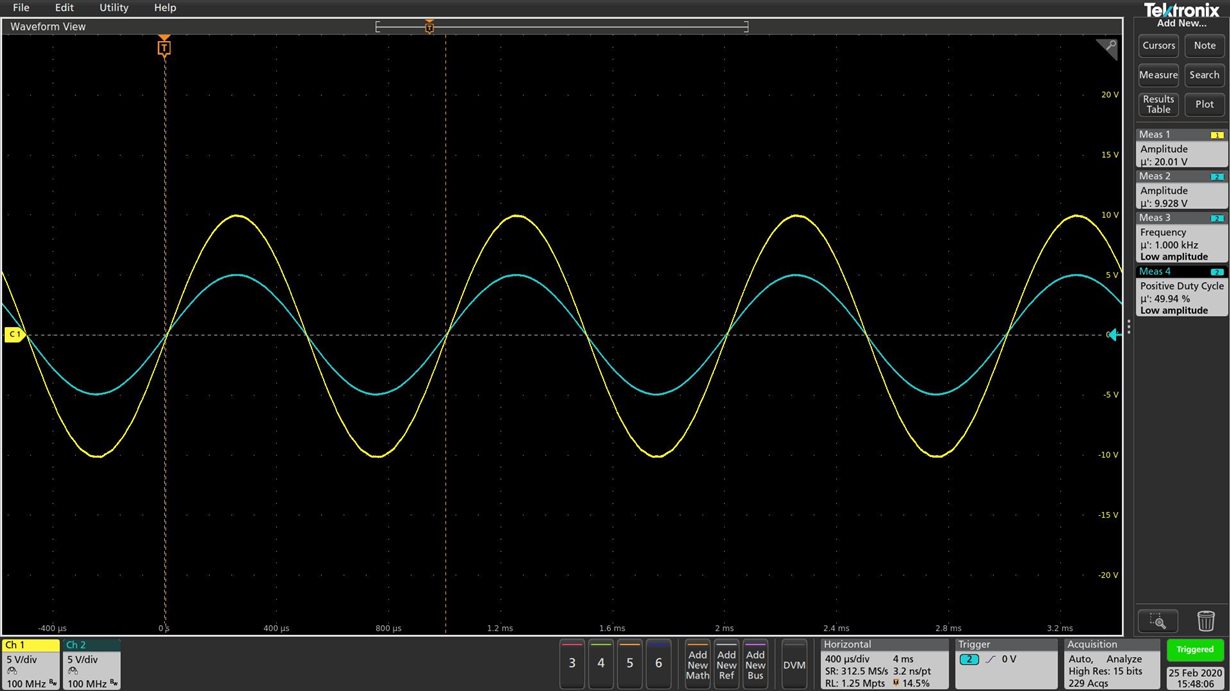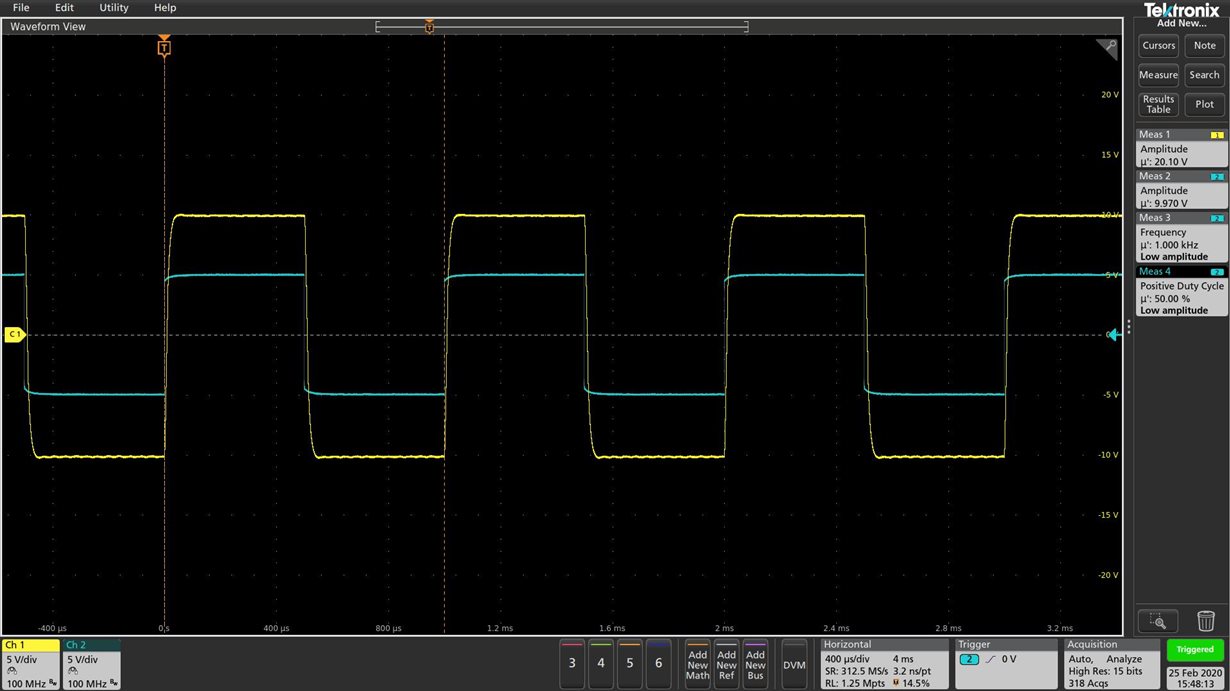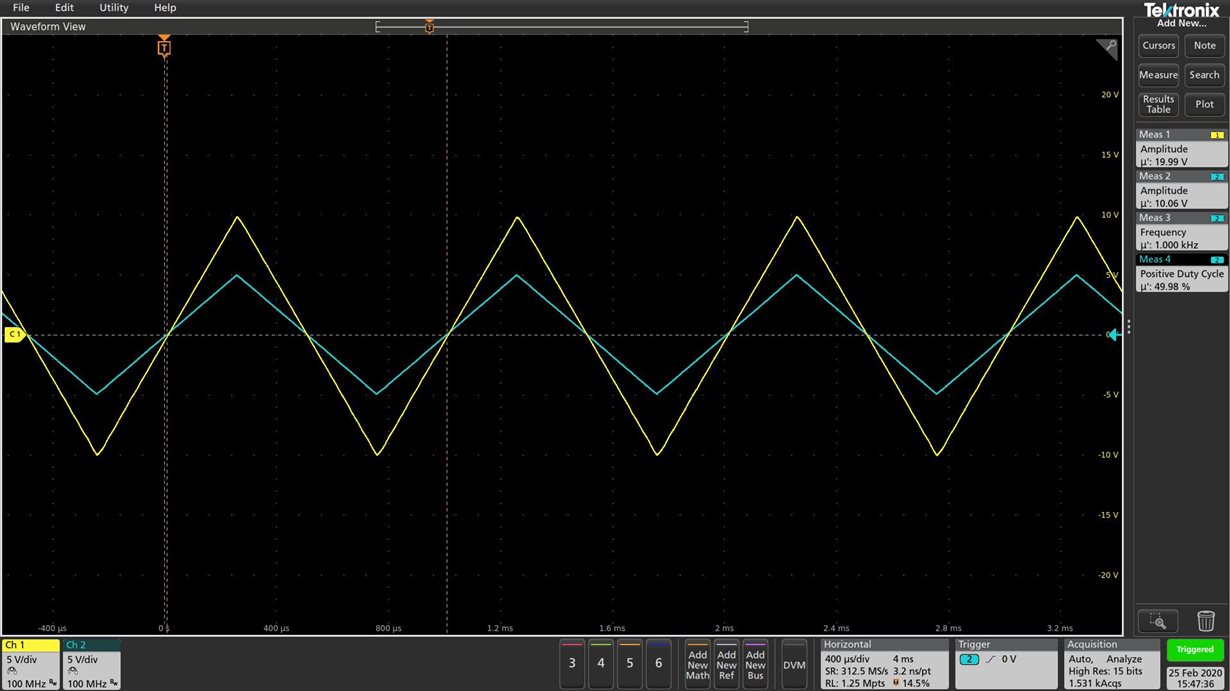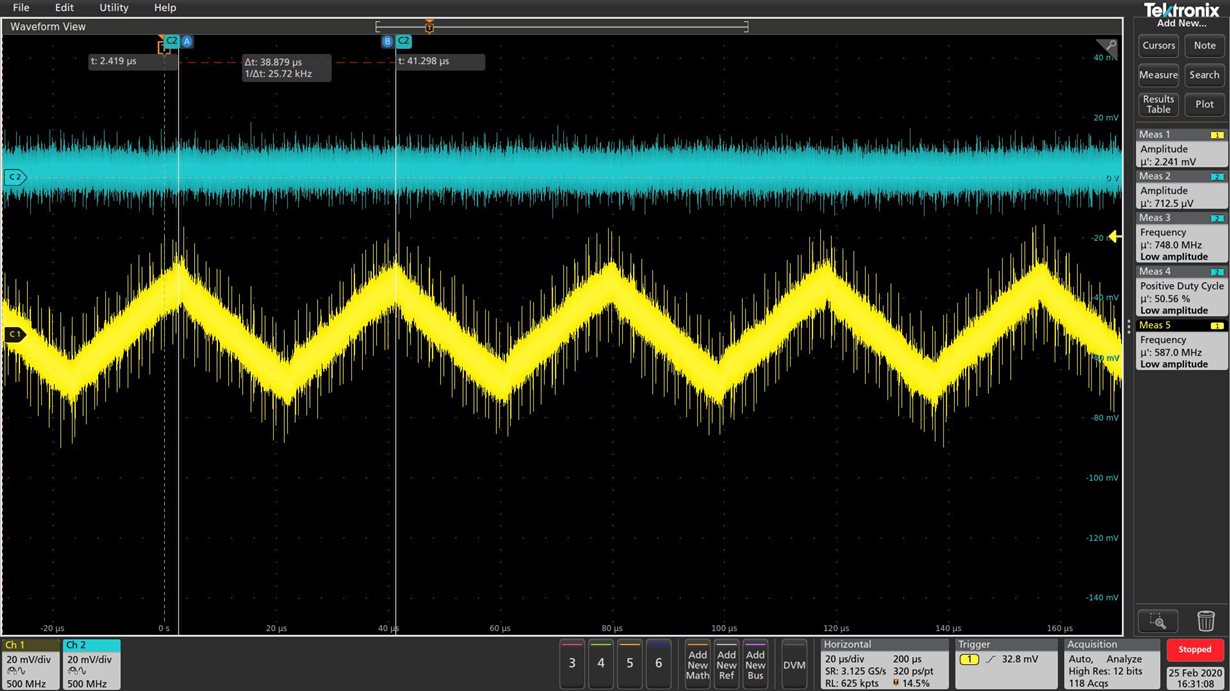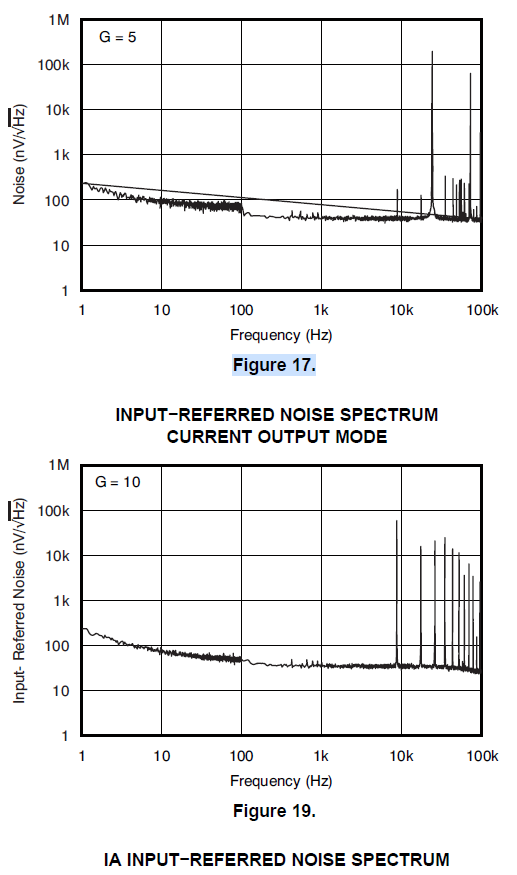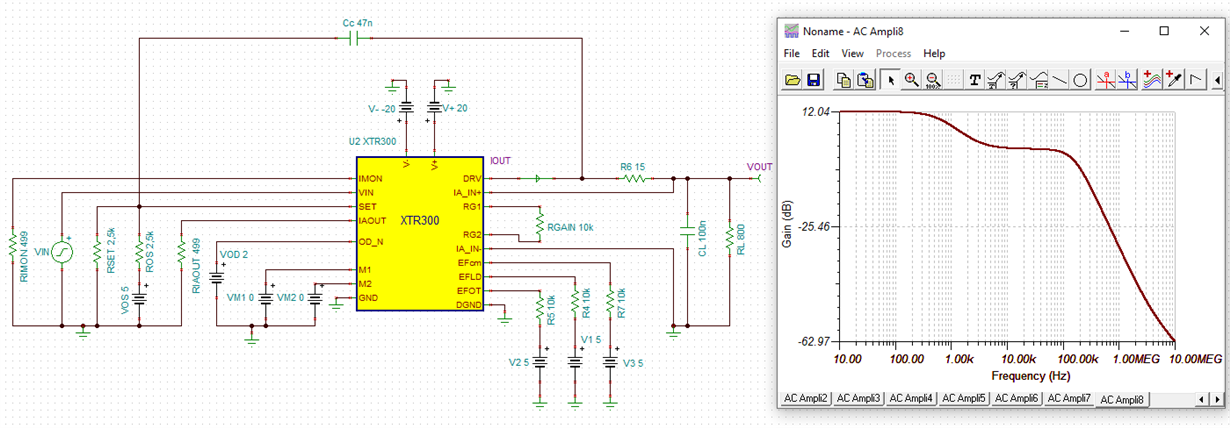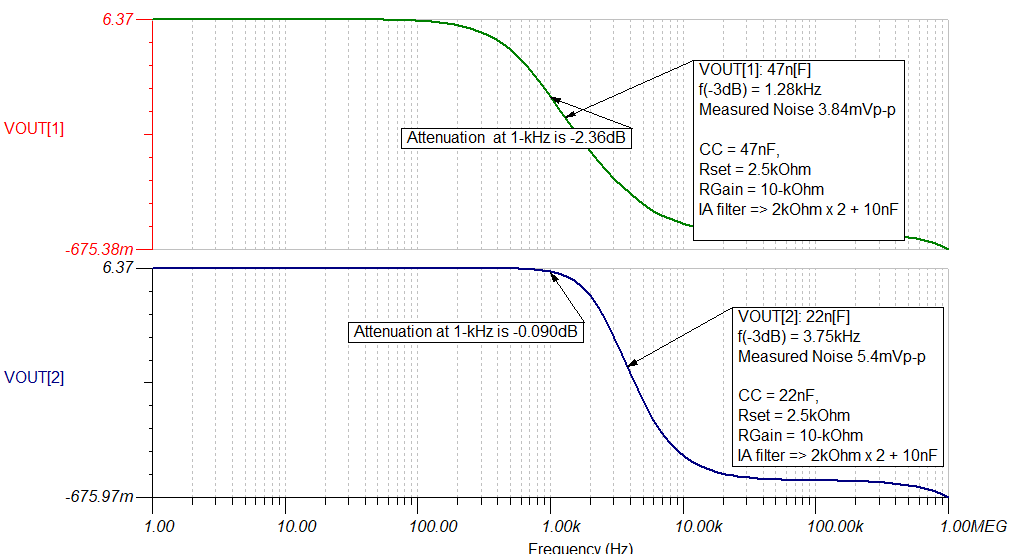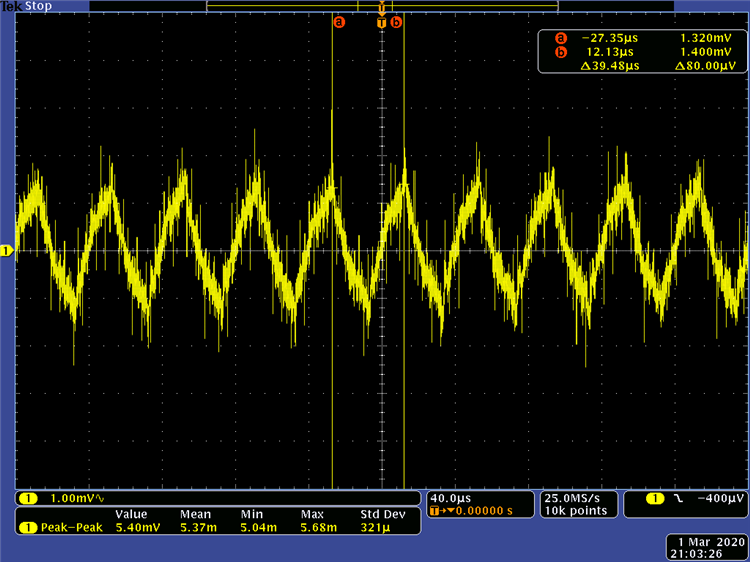Other Parts Discussed in Thread: , TINA-TI
I'm currently evaluating the XTR300 using the evaluation board. I noticed that with the default board configuration any input signal above 50Hz gets distorted and hence at 1KHz the input/output ratio (gain) is no longer maintained. So I performed some modifications that allows 1KHz signal to pass without too much distortion:
C3 from 47nF > 3n3F
C1 from 10nF > 1nF
Note: The new values are chosen by experiment (trial and error), no other changes have been made to this point in time.
Unfortunately I noticed that these modifications also resulted into a certain 25KHz triangular noise with 40mVpp superposed on the output signal, I guess due to the circuit getting marginal stable?
So my questions is can this triangle noise (or any other excessive noise) be avoided while allowing a 1KHz signal to be passed?
Any other modifications I can/should consider?


